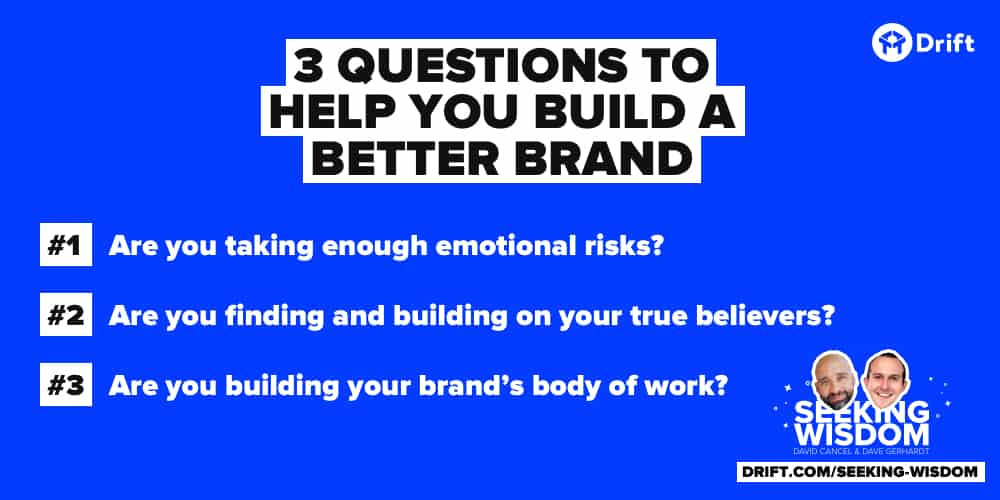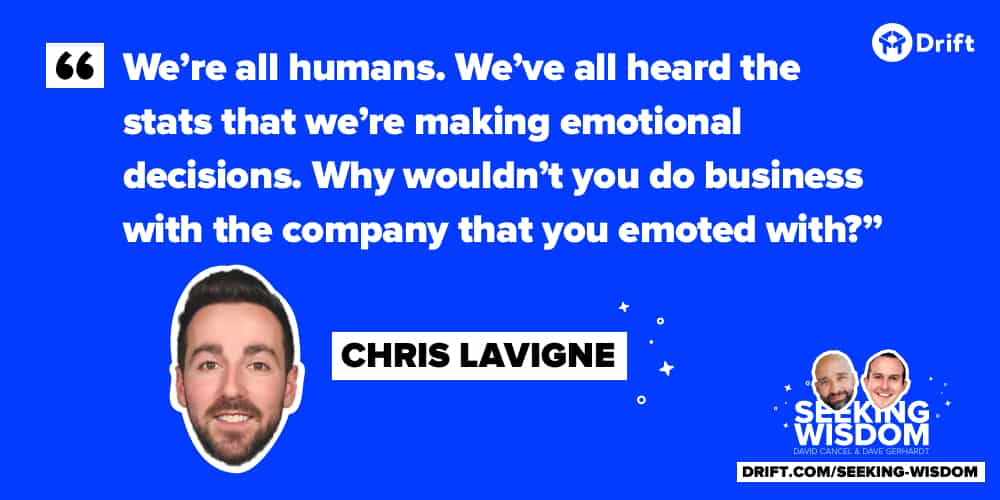
☝️ Click Here To Tweet This Tip ☝️
Wistia is on a mission – and it’s not just trying to sell video software.
A few years ago, I might have described Wistia as a SaaS company that offers video hosting and analytics. But thanks to a major product launch this year, the company is in flux. They’re in growth mode.
Like all other brands in the #Exceptions podcast series, Wistia puts a huge emphasis on customer centricity. It’s one of the biggest reasons why more than 300,000 companies worldwide use Wistia products to create, host, and measure their videos, including companies like Mailchimp, Sephora, Zendesk, Squarespace, and Casper.
Here’s what I learned from exploring their brand.
Emotions Are Central to Your Brand
When we talk about all the changes the buying world is going through, most people think we’re just talking about B2C.
We’ll say things like, “We have endless options, choices, distractions.” The overwhelming amount of these “distractions” seem to apply to us only as consumers. But it applies in the B2B world, too.
More channels and more notifications arrive every day thanks to the work of persistent salespeople and clever marketers. Because of this, even the best product, with all of its benefits clearly stated, isn’t enough to dominate a market.
It blends into a sea of sameness.
But if you can make somebody feel something, you’re memorable. As Maya Angelou said, “People will forget what you said, people will forget what you did, but people will never forget how you made them feel.”
If you focus on resonating with somebody—not just reaching them—now you’re cooking with gas. You have a chance at doing so much more than acquiring someone’s attention. You will hold it.
Maybe words like “make them feel” make you recoil a little bit. A lot of the best companies build brands that border on warm and fuzzy. They’re quirky, “startup-y,” seemingly unrealistic for many companies.
But you don’t have to make your audience laugh or feel warm and fuzzy if that’s not authentically you. You can make them feel:
- Smarter
- Empowered
- Successful
- Heard
- Like their work matters
- Like a genius
Whatever the emotion, it has to be just that: an emotion. People will never forget how you made them feel.
Whether we like it or not, people make emotional buying decisions. Today, we need to build human-powered brands that tap into emotions, not through manipulation but by being real.
There’s nothing more B2B than the human element. Whenever we picture anything stereotypically B2B, we picture multiple humans interacting. The classic two executives brokering a deal or the salesperson taking someone to dinner.
These ideas are human, people buying from other people. What would be more authentic to B2B than a human-powered brand?
But in the digital age, many companies and marketing departments have started to lose that. Instead, what if you put the people back into your sales and marketing?
What if you made them feel?
3 Questions to Help You Build a Better Brand
Question #1: Are you taking enough emotional risks?
This is incredibly challenging for people in business, but can be a differentiating factor between a brand that people feel something towards (and thus pay a premium for) and another company that’s easily ignored in this world of infinite choices.
After all, as Wistia’s Chris Lavigne points out: “We’re all humans. We’ve all heard the stats that we’re making emotional decisions. Why wouldn’t you do business with the company that you emoted with? That made you feel good, or empowered to do better at your job without asking for anything in return?”

☝️ Click Here To Tweet This Quote ☝️
Taking an emotional risk doesn’t mean being sappy or funny. It means making others care by showing how much you care.
The idea of emotional risks might seem a little murky, but all the best brands have given it serious thought.
Are you taking enough emotional risks in your marketing?
Question #2: Are you finding and building on your true believers?
In our efforts to build big businesses and see massive returns on our current projects, we often focus only on the big, topline numbers.
What we miss when we do that are the indicators that tell us where we should keep investing in something to grow it. Wistia, for its part, looks for passionate responses from employees and their audience as a sign they should keep investing.
If something works, don’t do more like it. Do more with it.
When we build a brand as marketers, we can’t always measure response right away, or even ever. So instead, what if we focused on our “true believers”? These are a small number of people reacting in a big way to what we do. True believers aren’t the finish line that indicates success, but they are a signal that we’re on the path towards it.
Question #3: Are you building your brand’s body of work?
There are tons of emerging themes already in #Exceptions, but one of the most prominent is the idea that your brand is built on a wide array of things.
A brand is the sum of your team’s behavior and the emotions that your customers feel when they’re on the receiving end.
But make no mistake: the only way that collective behavior adds up to a great brand is if the company focuses on the entire body of work. You can’t build a brand if each action you take is scrutinized to the point of needing it to work. Besides, in what world does every action you take work?
According to Chris from Wistia, only one or two out of ten videos he makes lines up with his vision for it. For whatever reason, sometimes it doesn’t hit what he had in his head. It still works, but not perfectly.
Maybe you’ve experienced the same in content creation, but there’s good news. When that piece of content does “hit,” it makes you, the creator feel something. That’s when you know, that your audience is going to feel something too, Chris said.
“That’s the good stuff.”
Want to hear the full episode of #Exceptions about Wistia? Listen here:



